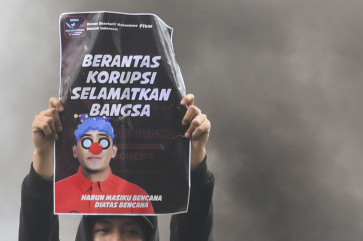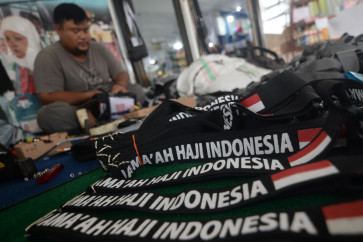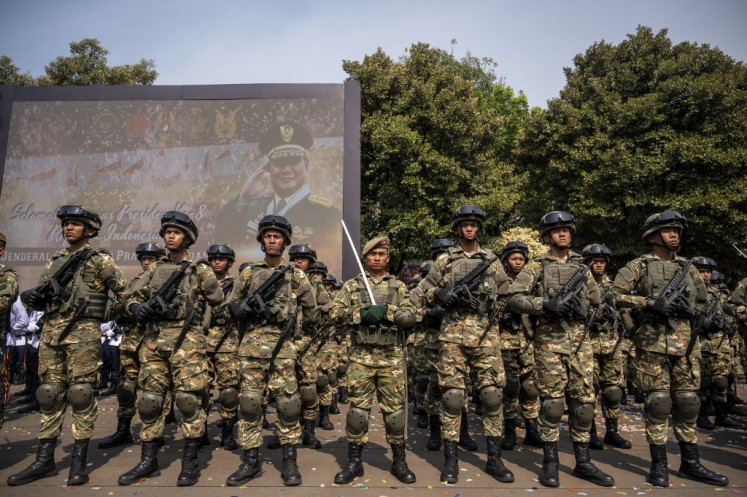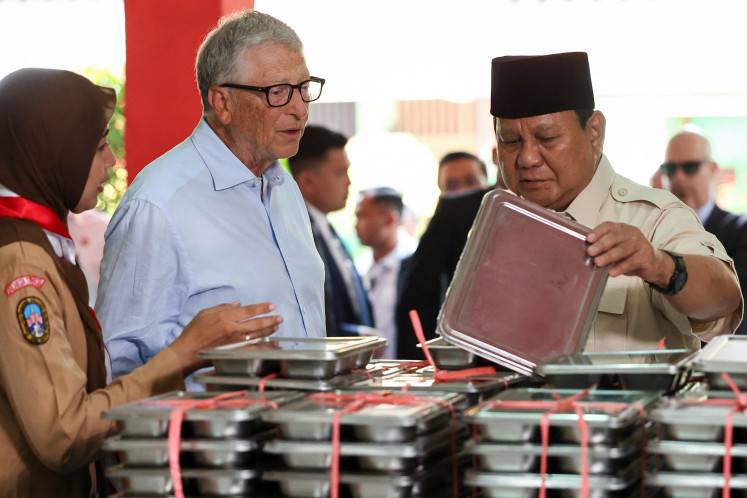Designers transform look of traditional cloths
Courtesy of ImageDynamicsThe tireless efforts of Indonesian designers, who explore the country’s rich traditional motifs and fabrics to create everyday wear with global appeal, have started to show noticeable results
Change text size
Gift Premium Articles
to Anyone

Courtesy of ImageDynamics
The tireless efforts of Indonesian designers, who explore the country’s rich traditional motifs and fabrics to create everyday wear with global appeal, have started to show noticeable results.
Recent creations using Indonesia’s rich traditional motifs and fabrics have come from the creative and skillful Denny Wirawan, the master of mixing prints and patterns. He brought new life to the traditional fabrics in his spring/summer 2017 collection titled Kelana.
Kelana, or “wander,” features bohemian-style clothing that incorporate Javanese lurik (stripe-patterned cloth), tenun ikat (woven cloth), geringsing or the double ikat cloth of Bali and batik.
The collection consists of 50 designs of female and male wear, all of which scream free-spirit and have a contemporary feel. Suitable for any occasion during the day or the evening, it offers urban dwellers an offbeat yet artistic look.
At the trunk show in The Dharmawangsa, South Jakarta, the ready-to-wear collection was presented in three sequences.
The first part, drawing from a reddish-brown palette, was dominated by loose, summer dresses with digital print motifs taken from Javanese batik and Nusa Tenggara-woven cloth combined on flimsy materials.
Next was a lively combination of stripes, featured on outerwear, dresses, blouses and pants in a monochromatic palette, which Denny used to play with geometrical patterns, batik motifs and embroideries, as well as masculine and feminine looks.
The last sequence showcased evening attire that came in loose silhouette dominated by black and gold colors on luxurious fabric, simply cut to enhance the already glamorous look coming from Denny’s choice of patterns and motifs.
The designer featured motifs such as flowers and the phoenix, or Lok Can as it is known locally, and enlarged them in digital print or embroideries, laying them on a background of black cloth or stripes, which was mainly seen in the male wear.
Denny, who hails from Surabaya, East Java, used delicate yet comfortable materials such as silk chiffon, silk shantung, organza fabric and sateen for the collection.
The quality materials and the mixing and matching to create different looks — including a chic and elegant male cropped jacket with an embroidered motif and palazzo stripes — might have triggered the buy rush at the end of the show.
Collaborating in the show were, among others, Tulola Jewelry, which provided tassel earrings to complete the bohemian concept, and Marista Santividya for shoes. Actress Happy Salma, who co-founded Tulola with Dewa Sri Luce Rusna, said this was the second collaboration with the designer.
“Denny and Tulola happen to share the same vision,” she said. “Usually a show’s collection is just fit for tall and slim models rather than for daily wear. Kelana clothing suits the various needs of Indonesian women.”
KAIN NEGERI
The Indonesian Designers Association (IPMI) and the organizer of the annual Jakarta Fashion and Food Festival (JFFF) presented this year the latest collections of six renowned designers, each of whom showcased daily wear outfits that utilized traditional fabrics.
The Kain Negeri show was among the most-awaited events of the month-long festival that ended on May 7 in Kelapa Gading, North Jakarta.
Andreas Odang, Carmanita, Ghea Panggabean, Liliana Lim, Stella Rissa and Yongki Budisutisna brought out fresh, stylish and ultra-modern takes on traditional fabrics.
Yongki, for example, created edgy and “rebellious” designs on woven cloth, while Stella Rissa transformed batik and Baduy’s tenun bulu — handwoven silk with feathery patterns — into a playful yet elegant summer outfit.
Andreas presented a collection that was inspired by Moroccan clothing using colorful West Sumatran songket woven fabric.
Carmanita used handmade batik on Lycra and silk to create ready-to-wear pieces with unique motifs and cuts, while Liliana Lim implemented her twist technique on flimsy materials such as chiffon and played with draping in creating dresses using tie-dye cloth from Palembang.
Ghea Panggabean, who is known for creating ethnic looks with a modern touch, designed a fabric with a collage motif of Javanese wayang kulit (shadow puppets) that appeared suitable for any special occasion.
__________________
Juliana Harsianti is a contributor with The Jakarta Post.









